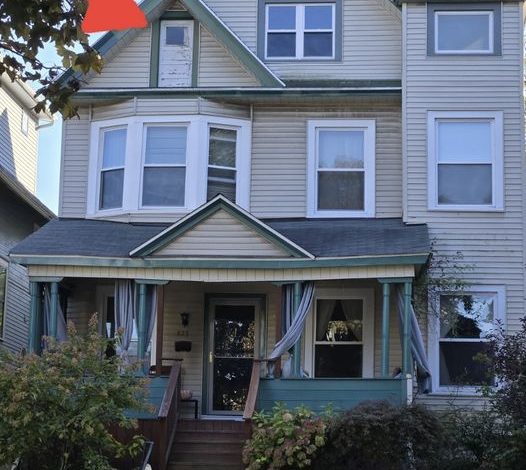
The Strange Detail Most People Overlook in Early 1900s Homes
Do you remember those summer evenings when you could open a door and let in the breeze, filling the house with the scent of freshly cut grass and the cool touch of dusk? For many of us, those days bring back memories of the simple beauty in older homes, built with the thought of merging comfort with nature. I can’t help but smile when I think of an old house I once knew, with its little door perched high above the porch—a curious detail that seemed to beckon stories of the past.
That little door, no more than 3.5 feet tall, was tucked into the gable, and like many homes from the early 1900s, it hinted at something more than meets the eye. Maybe it led to an attic space or a hidden nook, but the real beauty lay in the history it represented. Many homes of this era had similar doors, and while they may seem like architectural oddities today, they often served a specific purpose: to cool the house during warm summer nights, allowing the fresh air to flow through while preserving the charm of an intimate “sleeping porch.”

In an era before air conditioning, homes were built with thoughtful design features to maximize natural cooling. The small gable door may have once opened out onto a sleeping porch—a semi-outdoor space where people could catch a breeze on hot nights. Some houses even featured decorative railings in front of these doors, a practical safety measure that didn’t compromise on style. These sleeping porches weren’t just functional; they were a part of life, a place where you might lay a bed or lounge chair and doze under the stars. It’s a memory that many older folks fondly recall, their mothers or grandmothers talking about nights spent listening to the sounds of crickets and owls.
These details weren’t just about comfort. They were also about the beauty of craftsmanship. Homes built during this time often had intricate gingerbread trim, ornate railings, and thoughtful touches that elevated the everyday into something beautiful. Even the smallest features, like that little door, were designed with an eye for elegance and balance.
The early 20th century was a time when people believed homes should be more than mere shelter. Homes were a statement—about taste, about the family within, and about the era’s optimism. The elaborate woodwork, the delicate iron railings, the sleeping porches—they all spoke to a time when life moved a little slower, when neighbors chatted across fences, and when home design reflected the belief that beauty could be found in the practical.

These small gable doors remind us of a time when people were deeply connected to their homes. Every feature was not just for show but a part of the family’s rhythm. A door like this one could be opened to let in the breeze, cooling down the rooms without the flick of a switch, making the home feel like a natural part of the world outside. It’s a cultural testament to how homes were designed to work with the environment, not against it, long before modern sustainability movements took hold.
Though many old homes have lost their original trim or railings, their underlying beauty remains. When I see a house where the gingerbread has been removed, I like to imagine what it must have looked like in its full glory. Picture that little door, surrounded by scrolls of delicate woodwork, perhaps painted in rich, contrasting colors, with a small railing framing the space like a jewel box. It’s the sort of charm that makes you stop and wonder—about the people who lived there, the hands that built it, and the history it carries.
There’s something wonderfully heartwarming about these old details. They remind us that our homes, just like our lives, are layered with stories, with both function and flair. In many ways, these little doors and porches take us back to a time when the pace was slower and life had a different kind of rhythm. There’s comfort in knowing that while the world around us changes, these old houses stand as a connection to our past, whispering the secrets of simpler days through their carefully crafted design.
Next time you pass by a house with an odd little door or a detail that seems out of place by today’s standards, take a moment to appreciate it. Chances are, it served a purpose once—and perhaps still does, even if it’s just to remind us of a time when life’s little things were made with care and intention.

Old houses have a way of speaking to us, of drawing us into their world where every creaky floorboard and weathered door holds a story. They invite us to slow down, to appreciate the artistry of a time when even a small gable door was more than just an entrance—it was part of the heart of the home. And while the gingerbread may be gone and the railings may have rusted away, the beauty of these homes remains, a testament to the enduring charm of the past.
For those of us lucky enough to live in or near these beautiful relics, every day is a chance to step back in time, to honor the craftsmanship and thoughtful design that defined an era—and to keep that legacy alive for the future.





